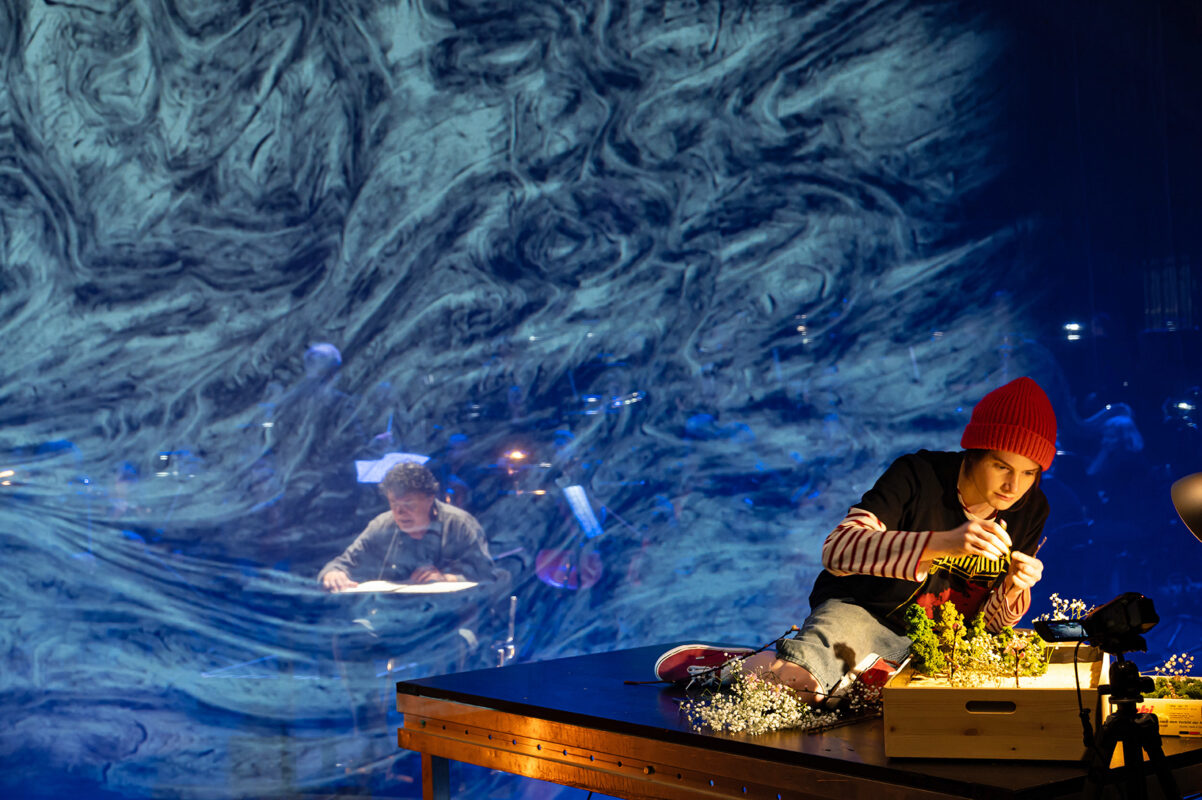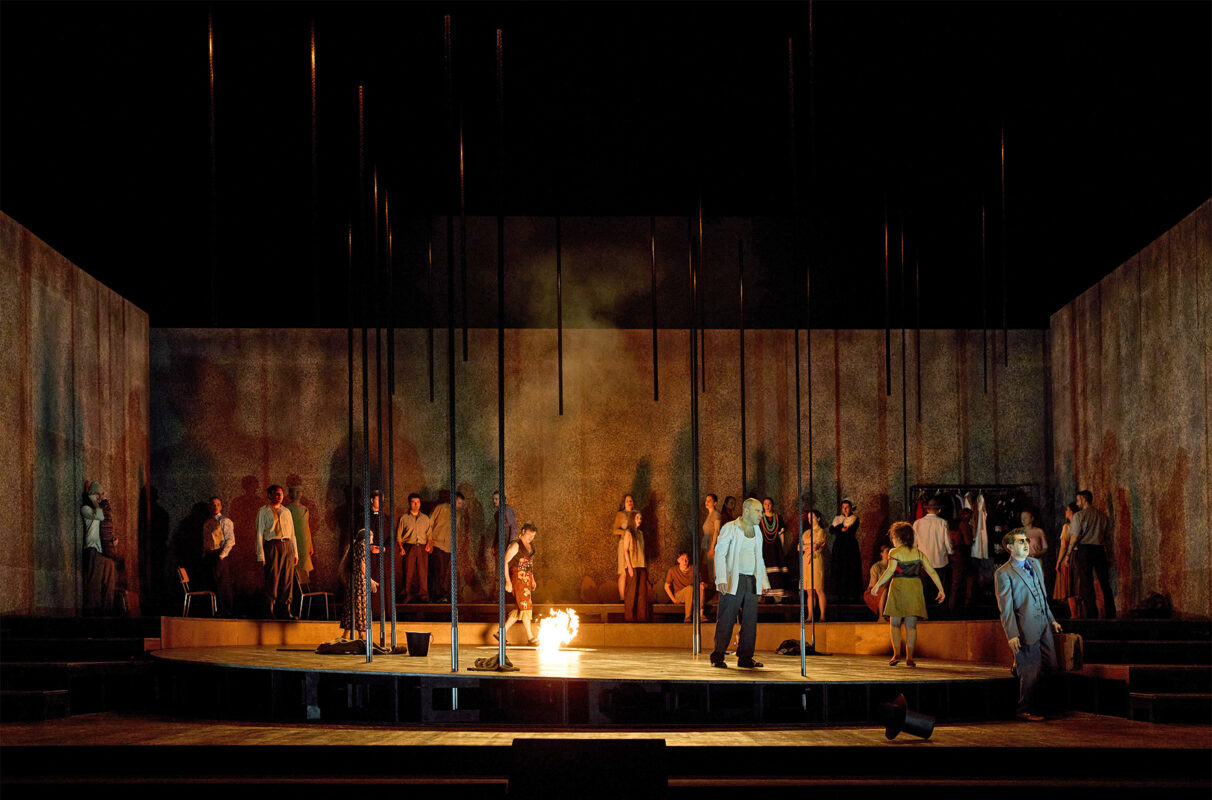Lost in the jungle
Manuel Renggli's "Jungle", which the Lucerne Theater hosted on 8 February, was billed as the world's first "brass opera". However, the music failed to meet the high expectations.

It is an interesting project initiated by the director of the Lucerne Theater, Benedikt von Peter: A genuinely Lucerne opera in which the Bürgermusik Lucerne brass band, made up of professionals and amateurs, sits in the orchestra pit, conducted by its director Michael Bach. The stage design was created by Lucerne origami artist Sipho Mabona and the majority of the stage crew are members of the ensemble.
The music was provided by Manuel Renggli from Lucerne, who is not only trying his hand at composing music theater for the first time, but is also presenting a "brass opera" as a world premiere. His score requires 25 brass players, four percussionists and a synthesizer player. A daring, "loud" formation in the small Lucerne theater, which is why the performers were equipped with microphones. So more musical than opera?
The text was written by Michael Fehr from Bern, winner of the 2018 Swiss Literature Prize, who describes himself as a storyteller. Jungle is an eloquent example of this: storytelling takes center stage, a modern fairy tale, a parable between the end of the big city and the destruction of the jungle, which he tells in poetic images:
Brahma, a girl living on the street, neglected by her alcoholic mother Raja, grabs a handful of pills from the son of the "Red Baron" and sinks into a world in which reality and hallucination become blurred. She encounters rats, monkeys, a snake, ants and a panther. It is a plot with powerfully colorful images, told in a unique linguistic style that includes rhythm and deliberate redundancies. But it is not a libretto that carries the evening through: no drama, no confrontation or dialog between opponents, no development of the character(s). At the end, Brahma is once again the ragged girl in the big city. The focus is therefore mainly on the inner images and feelings of the sad main character. With Ina Langensand, she is also played by an actress with a haunting performance. And the story is told by the actor Walter Sigi Arnold, who also performs brilliantly as Panther.
Especially for looking
The scene in Lucerne is dominated by Sipho Mabona's abstract origami objects, intoxicating images full of color (lighting: Clemens Gorzella) and bizarre shapes, on which video projections (Rebecca Stofer) suggest the locations of the action. And the music? It should actually develop its own dimension, filling the dream visions with color, drama or elegiac "melodies".
But there is little evidence of this: harmonic processing, exploration of the sonic richness of the brass instruments or rhythmic diversification - nowhere to be found. The music, carried by endlessly repetitive, similar patterns, ripples along. However, this musical monotony is also largely due to the non-libretto, which offers no dramaturgical bite whatsoever.
Changes such as the jazzy syncopations during the monkey dance or the triumphant climax at the end remain the exception. In addition, mutes are often used to avoid drowning out the singers despite the microphone. Jungle is reminiscent of a movie, with images whizzing by accompanied by music. The Bürgermusik, consisting mainly of amateurs, plays well under the accomplished baton of Michael Bach, but is unable to really unfold.
Director Tom Ryser, together with the excellent ensemble, manages the feat of keeping the audience on the edge of their seats. The alternation between seriousness and slapstick is skillful, and the singing and acting cast give their best. Birgit Künzler's set design is ingenious, brilliantly managing the balancing act between a fabulous world portrayed by people.
There is Hubert Wild as a "Feathered Man" modeled on Papageno, who switches between countertenor voice and baritone with virtuosity. The expressive Rebecca Krynski Cox as the drunken Raja also makes her mark. And Diana Schnürpel as the snake Atlanta, with her melismatic, sinuous coloratura, reminds us just how great her Queen of the Night is.
In the program booklet, Manuel Renggli describes the strong linguistic rhythm of Fehr's narrative art as the "crux" of his compositional work. In fact, the solo parts still lack independence. Renggli succeeds in creating exciting moments with pulsating music in the chorus scenes of the monkeys, rats and ants. An evening that is fun to watch. But to listen to?
Further performances until April 3, 2020








